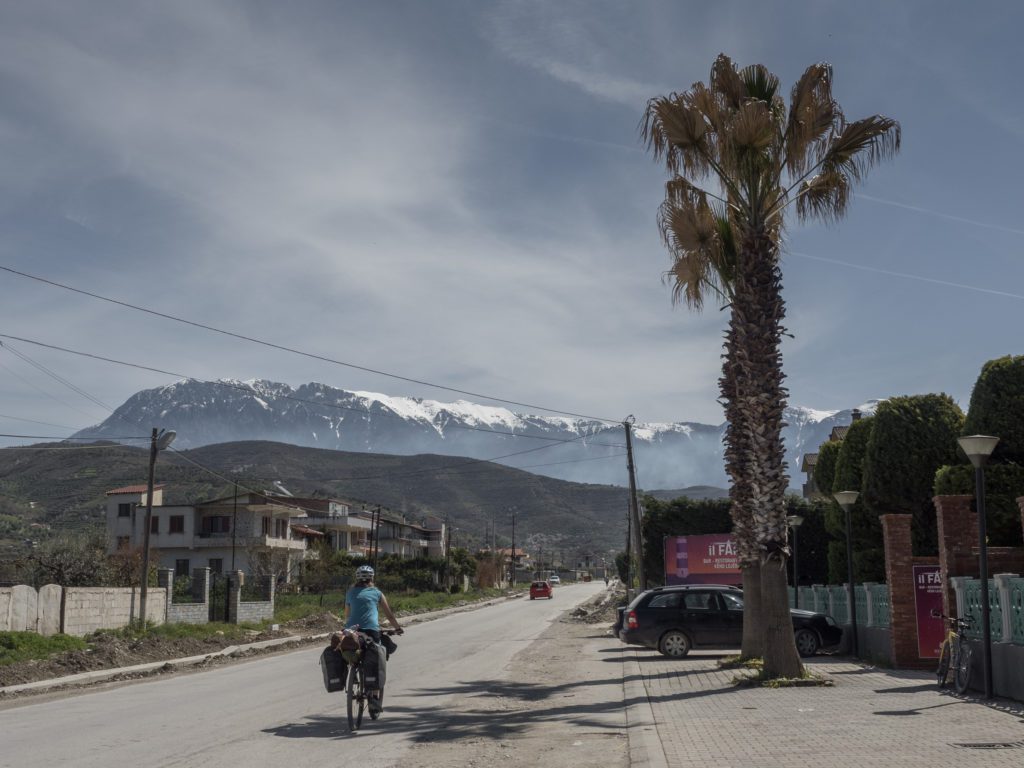You might have already read those summaries of best touring bikes crammed with specs that say nothing to you and bikes that all look the same. How the hell are you supposed to know if you need 26 or 27.5’’ wheels, or what a gear ratio is? Do you even have to know it to choose the right bike for your trip?
There’s no such thing as one size fits all – every bicycle traveller has different needs. On the roads and trails all over the world, you will find people travelling on all kinds of bikes. You don’t need a touring bike to start cycle travel. Maybe you already have a bike you use for commuting and Sunday rides and wonder if you could travel the world on it.
This is not a detailed technical article for cycling geeks. My goal is to help you, if you’re overwhelmed by different options of bicycles on the market and don’t want to learn everything about the specs but simply pick a bike to go for a cycling tour you always dreamt of.
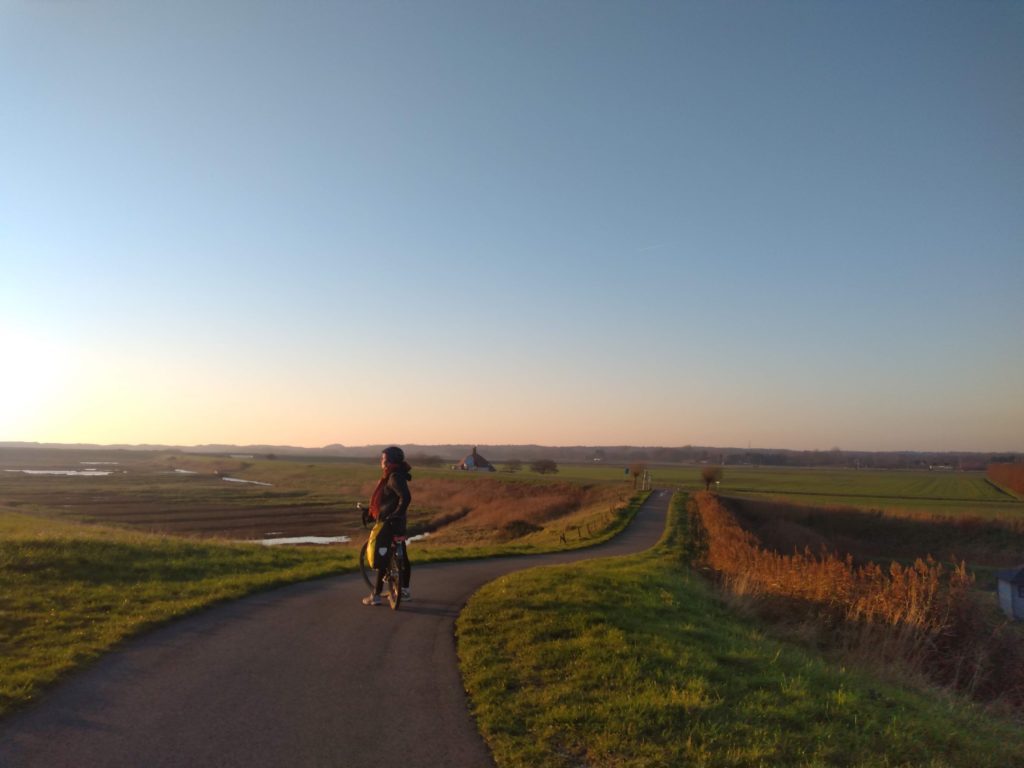
Artykuł zawiera linki afiliacyjne. Jeśli zamówisz coś za ich pośrednictwem, nie zapłacisz ani grosza więcej, a ja otrzymam niewielką prowizję, która umożliwi mi dalszą pracę nad blogiem. Dzięki za wsparcie!
What is a touring bike?
A touring bike is designed for multiple-day tours in remote locations with two main principles: durability and comfort. Unlike most modern bicycles used by athletes and commuters, touring bikes often har a steel frame. It’s heavier than aluminium and carbon but can handle more, and even if it breaks (which is very unlikely, though!), it’s possible to weld it.
Touring bikes are already equipped with luggage racks (in most cases both a front and a rear one). It’s convenient if you don’t want to bother installing extra equipment on your bike.
The riding position on a touring bike is rather upright. Most people who are not into sporty cycling or have back pain will appreciate it, especially on longer rides.

Travelling on a road bike
Even though road bikes are not designed with bicycle touring in mind, it’s possible to travel on a road bike! It will mean that you’ll have to plan your route very carefully and stick to asphalt roads (which is not an option in some countries, like Kirgistan or Namibia).
Road bikes are less sturdy and durable than touring bikes so the proper weight distribution will be crucial. If your bicycle has eyelets for installing a luggage rack, you can even travel with panniers. Alternatively, consider a bikepacking setup with bags attached to the frame, under the saddle and on the handlebar.
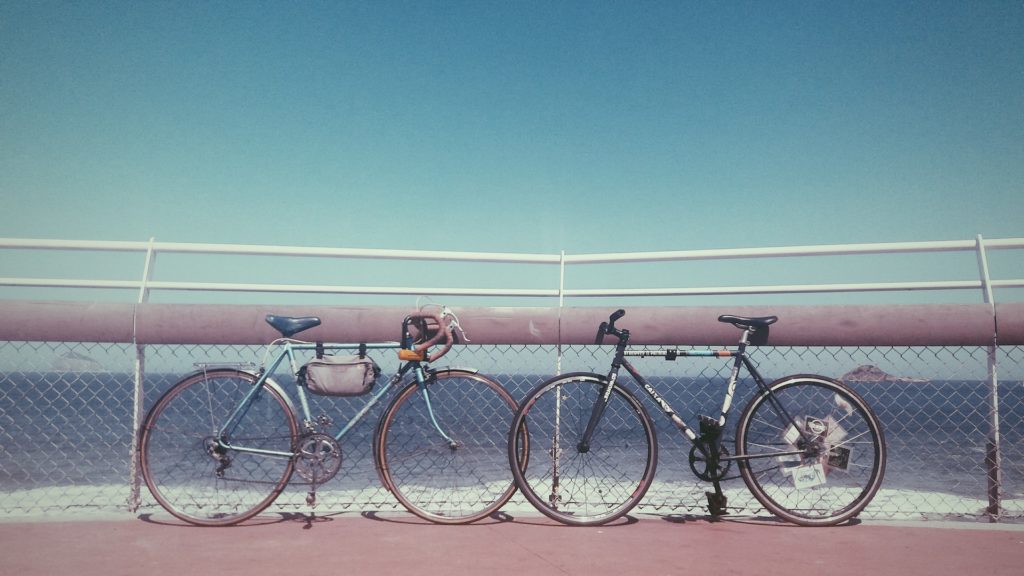
Another issue might be the cycling position, which is more leaned forward than on a touring bike. This might result in back pain on long distances, especially if your bike is super sporty.
If you decide to take your road bike on a journey, invest in good, puncture-resistant tires!
Bicycle touring on a road bike is a good idea if:
- You will stick to asphalt roads and are not afraid to cycle in traffic
- You don’t carry too much stuff
- You want to be fast
Challenges with touring on a road bike:
- The sporty position can be uncomfortable on longer rides
- You’re limited to asphalt roads
- It’s more fragile, and you’re more likely to run into technical issues
Travelling on an MTB bike
If you’re not keen on spending plenty of money on new gear for your tour, your old Rower górski can certainly do the job! At least if you have a hard-tail bike (an MTB with full suspension is not the best option for longer tours).
A mountain bike is a great option if you’re planning to go adventurous! Wider tires will make it easier to roll through the bumpy trails and you won’t have to worry about damaging your bike’s fragile frame.
Most modern mountain bikes are equipped with disc brakes which will never let you down on steep downhills in the mountains.
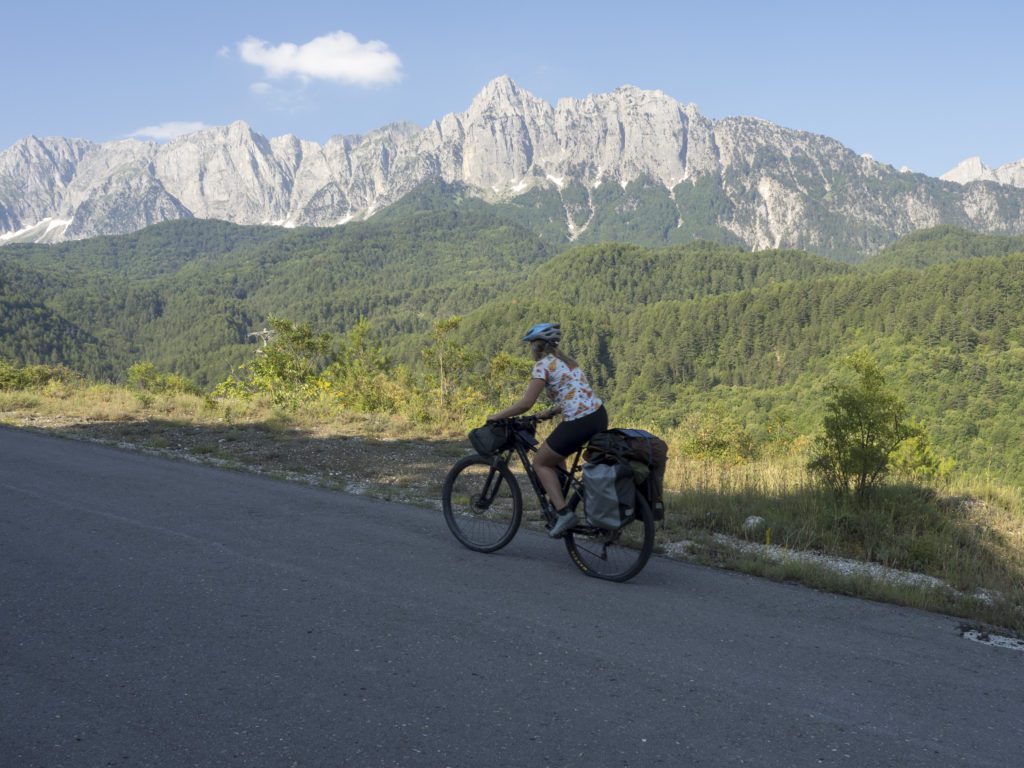
Bicycle touring on an MTB bike is a good idea if:
- You want to stay off-road as much as possible.
- You’re used to riding a mountain bike, and the position doesn’t bother you.
Challenges with touring on an MTB bike:
- The frame is much bigger than a road bike frame and more difficult to pack if you need to travel with your bike by plane.
- The sporty position and hard saddle can be uncomfortable on longer rides.
- You are slower on asphalt.
Travelling on a gravel bike
Rowerowy gravel bike is a perfect compromise between a road bike and a mountain bike. The riding position is a bit more long-distance-friendly. The bike is also lighter than an MTB. It’s a popular choice for most lightweight adventure cyclists and bikepackers. If you’re a bit more on the sporty side of the cycling spectrum and enjoy being fast, versatile and agile, a gravel bike is a perfect choice!
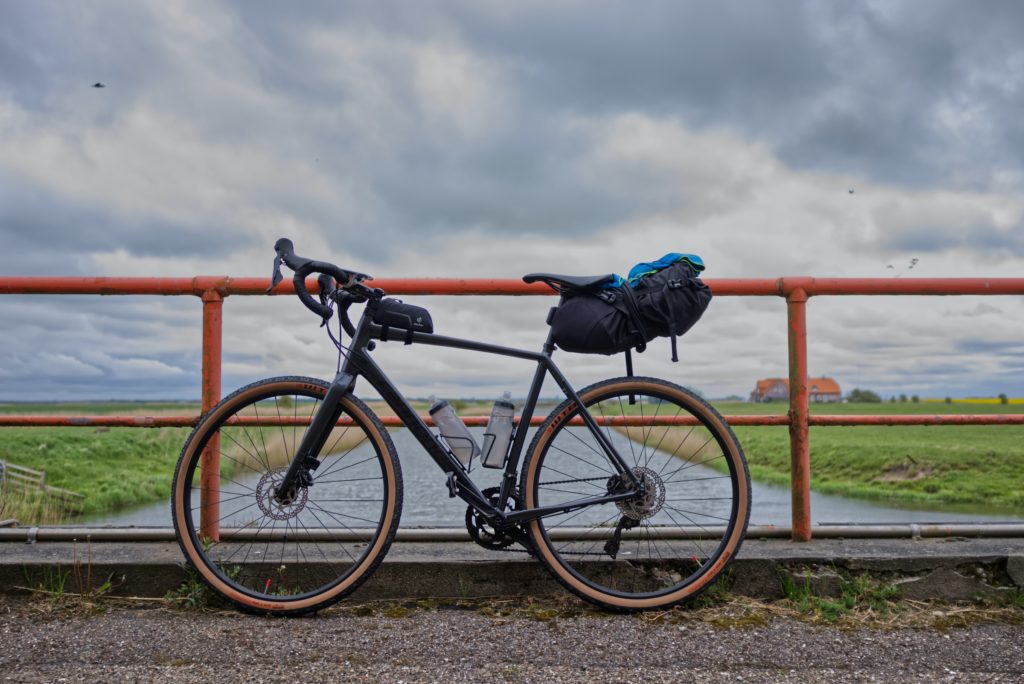
Travelling on a folding bike
An inconspicuous-looking folding bike is rarely considered a serious option for travelling the world, but there are many stories of people who made it to the farthest corners of the world on it. I’ve even read about a guy who cycled the famous Pamir Highway in Tajikistan on a folding bike!
Regular folding bikes usually have small 20’’ wheels, but you can also find models with 26’’ wheels which make the comfort almost comparable with regular bikes.
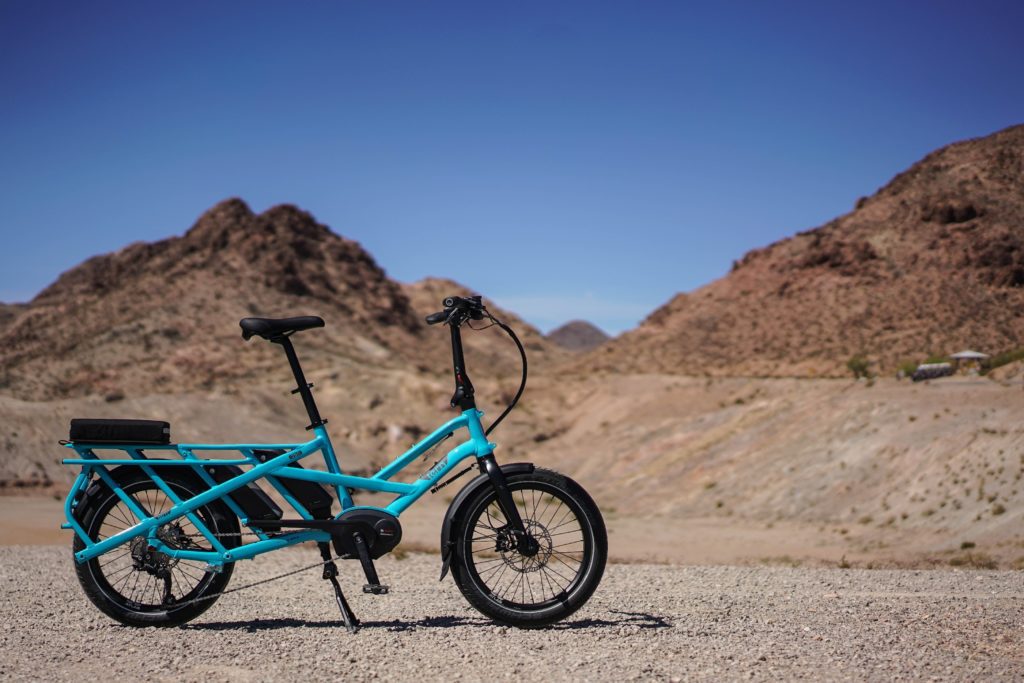
Bicycle touring on a folding bike is a good idea if:
- You need to transport your bike often between locations, and you don’t want to deal with disassembling a bike for the plane/bus/train.
- You don’t care about the speed.
- You’re not planning to cover long distances daily or travel with people on full-sized bikes.
- You don’t want to worry about where to leave your bike when you sleep in a hotel or hostel.
Challenges with touring on a folding bike:
- The small wheels make cycling much more exhausting.
- You’re slower.
Odwiedź this great article and the Brompton Touring group on Facebook for more info about travelling on a folding bike.
Travelling on a fat bike
Every now and then, even in the middle of the city, you can spot a ridiculously looking bike with quirky thick tires. A fat bike is a mountain bike taken to the extreme, and its tires are supposed to give you friction even on sand, snow and eyes. Unless you’re heading on an extreme winter expedition or are planning to cycle through deserts – forget it!
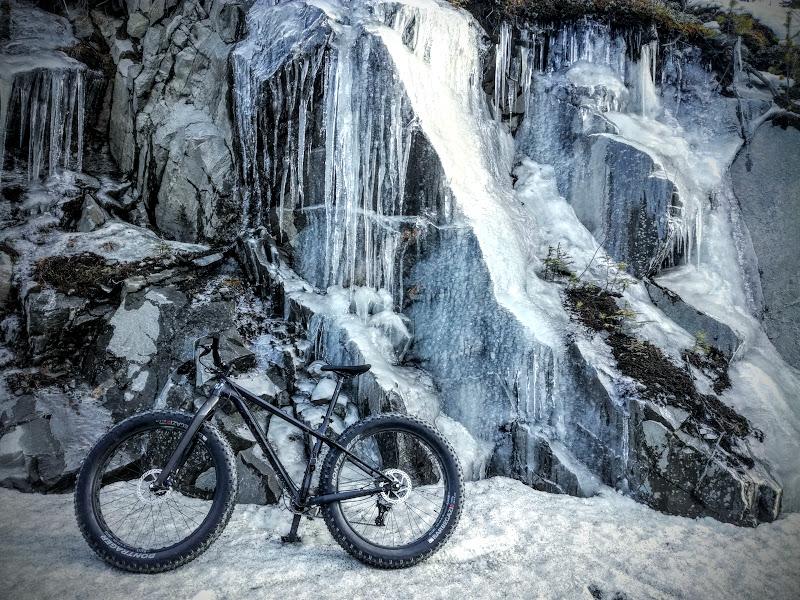
Bicycle touring on a fat bike is a good idea if:
- You’re going to cycle mostly through snow or sand.
Challenges with touring on a fat bike:
- You’ll be much slower on any other surface than snow or sand.
Travelling on a hybrid bike
A hybrid bike is a jack of all trades but a master of none. It will do just fine on both paved roads and offroad but it won’t exceed on either. It’s usually lighter than a touring bike. If you need a bike you can use both for travel, commuting and occasional fun ride with friends, a hybrid bike might be the best option for you.
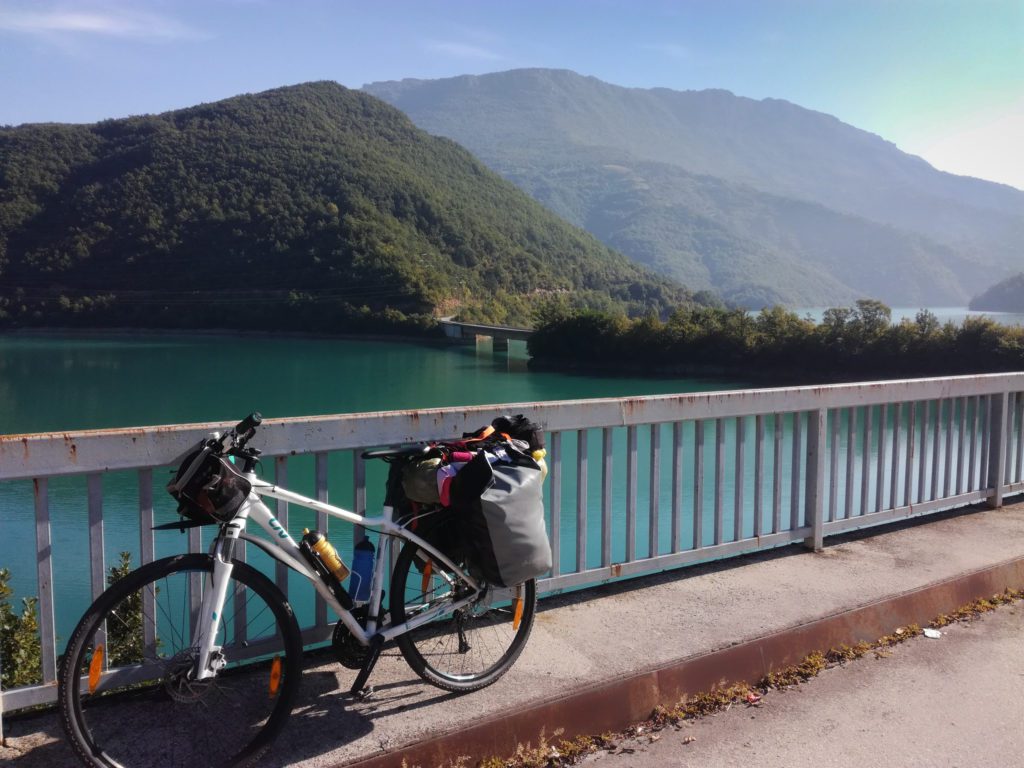
Travelling on an e-bike
Many beginners fear they aren’t fit enough to travel by bicycle and carry their stuff. Some would love to visit more mountainous areas of the planet but don’t want to put sweat, blood and tears into it. An e-bike can be a solution for both groups.
I’ve read stories of people who rode thousands of kilometres on a bike, sometimes using a solar panel to power it. But keep in mind that it requires a large solar panel to produce enough energy for an e-bike.
Travelling by e-bike is a good idea if:
- You plan to do credit-card touring and stay in hotels or on official campsites where you can always charge your bike.
- You don’t feel strong enough to do big climbs but want to travel in the mountains.
- You’re travelling with more experienced and significantly fitter cyclists and don’t want to be a drag.
Challenges with touring on an e-bike:
- You need to learn your battery range (it will be smaller when you’re bike is loaded and if the terrain is hilly) and plan more precisely.
- An e-bike is heavier than a regular bike, so it’s going to be more difficult to, for example, carry it up the stairs.
- Most air carriers don’t allow e-bikes on the plane. If your journey includes flying, an e-bike might not be an option.
FAQ – Choosing a travel bike
What to do if my bicycle doesn’t have holes for a luggage rack?
If your bicycle doesn’t have a luggage rack or holes to install one, you have two options:
- Go for a bikepacking setup with bags attached to the frame, handlebar and saddle.
- Use a luggage rack mounted on the seat post. This solution will only allow you to carry light bags as most seat post racks are not suited to carry heavy weight.
What wheel size is best for a touring bike?
On the Facebook groups and forums for bicycle touring, you can find endless discussions on the superiority of 26” above 27,5” and 29” or the other way around. As with most gear-related questions, my answer to this question is: it depends and: it matters much less than you think.
Long story short: 26 inches is the most popular size worldwide, so if you’re travelling to remote corners of the world, it’ll be easier to find a replacement if you have a 26-er.
29 inches make rolling over obstacles smoother, and once their roll, they keep on rolling, making the ride easier. But they are heavier and bulkier – I always get annoyed when I need to fit my 29-er mountain bike into a cardboard box for the flight.
27,5 is a middle ground between 26 and 29, with pros and cons of both.
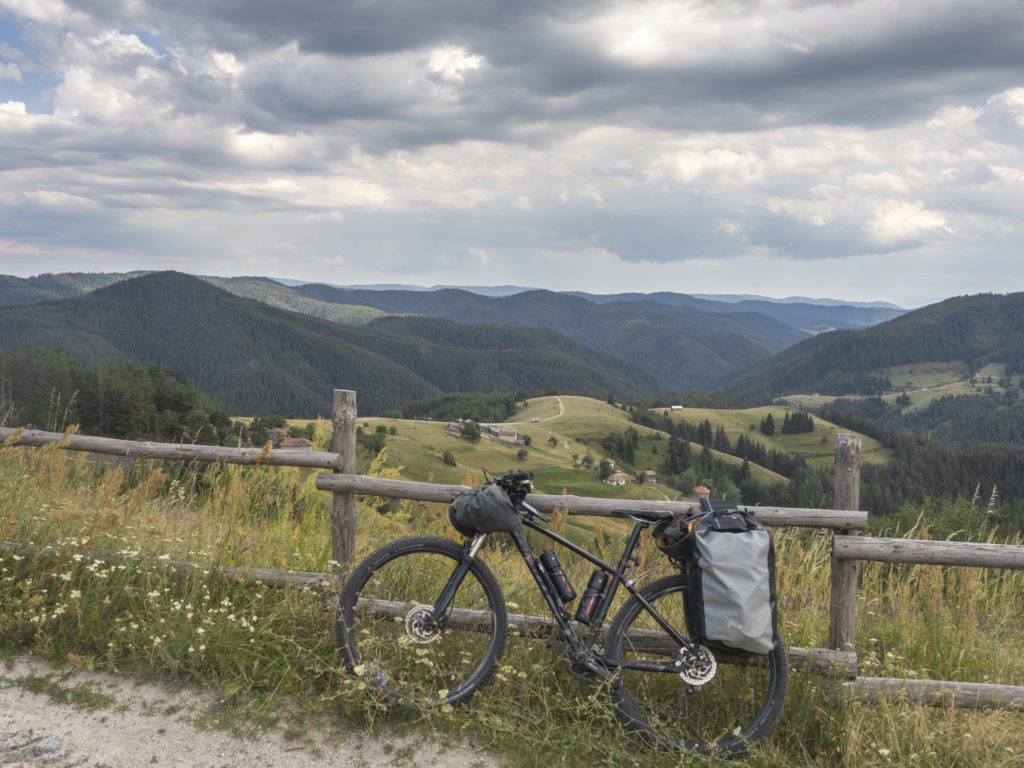
Should I choose a bike with disc brakes or V-brakes?
This is a matter of personal preferences and something I wouldn’t worry much about. If your budget is limited, V-brakes are the best option. They are also easier to fix (but more prone to malfunction).
Disc brakes are stronger, making your ride safer, especially on steep downhills and during wet weather. They are pretty reliable if you take care of regular maintenance, but if they break, it is difficult to fix them without good knowledge of bicycle mechanics and spare parts.
I have always toured on a bicycle with disc brakes and never had an issue with them.
What kind of bicycle do you travel on? Share your experience in the comments!
